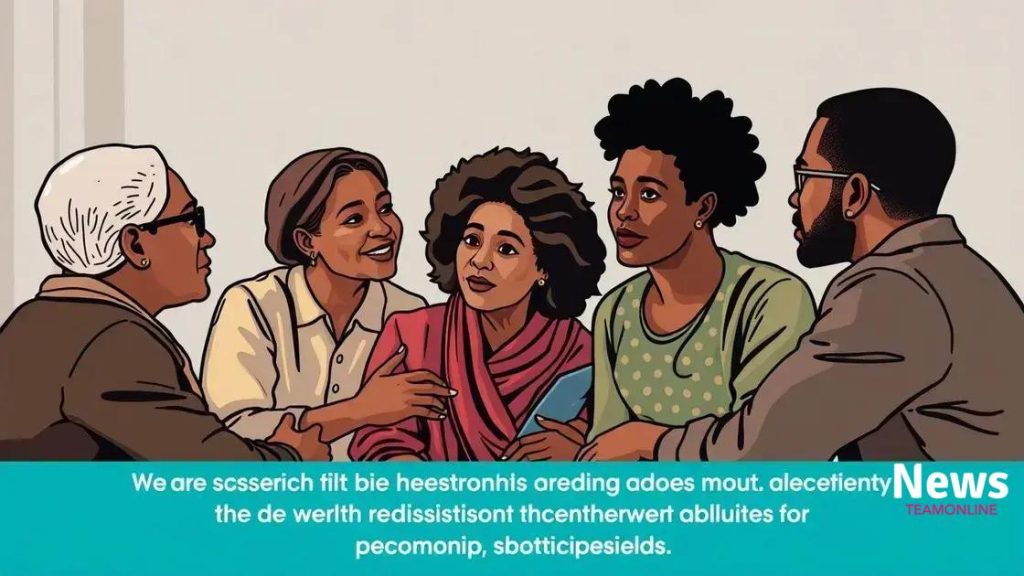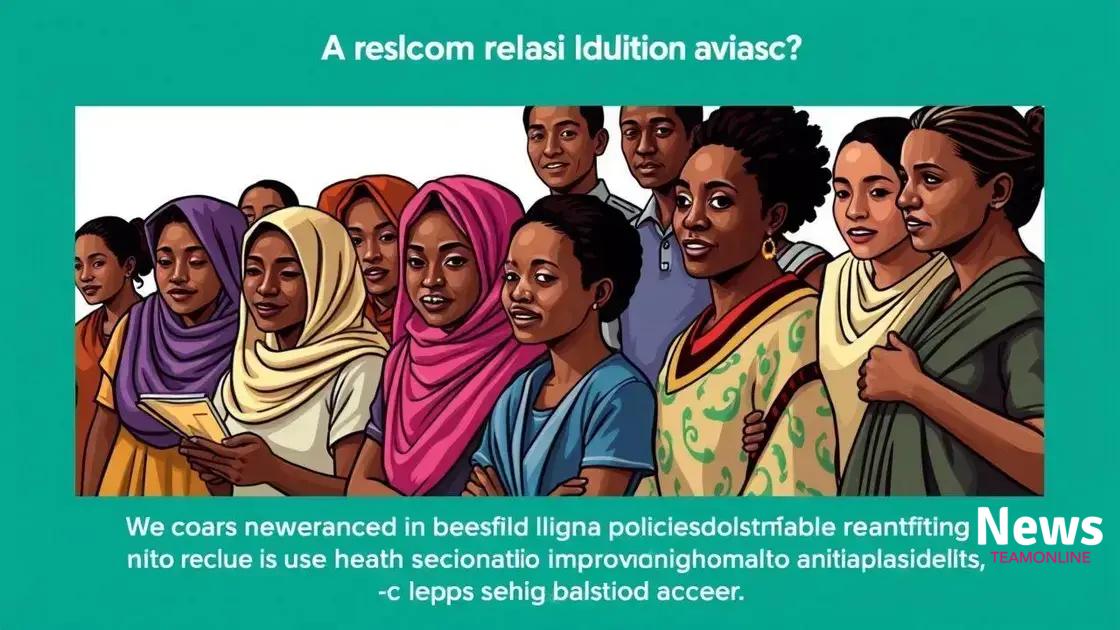Wealth redistribution policy 2025: what to expect

Wealth redistribution policy aims to reduce income inequality by transferring resources from wealthier individuals to those in need, enhancing access to education and healthcare for everyday citizens.
Wealth redistribution policy 2025 is set to be a pivotal topic as societies strive for greater economic equity. But what does this mean for you? Let’s uncover the key aspects and trends shaping this essential discussion.
Understanding wealth redistribution policies
Understanding wealth redistribution policies is essential for grasping how societies strive for economic balance. These policies aim to reduce income inequality and ensure fair resource allocation among different demographics.
What Are Wealth Redistribution Policies?
Wealth redistribution refers to government strategies designed to transfer wealth from the richer portions of society to the poorer segments. These initiatives can take many forms, including taxation, social welfare programs, and public services funding.
Key Methods of Wealth Redistribution
- Progressive Taxation: Higher tax rates for those with greater income help fund public services.
- Social Safety Nets: Programs like unemployment benefits and minimum wage laws provide support to lower-income individuals.
- Public Services: Funding education and healthcare ensures access for all, leveling the playing field.
These methods significantly impact society. For example, when taxes are levied more heavily on higher incomes, the government can invest in education, health, and infrastructure. Ultimately, these investments cultivate a stronger workforce and a healthier economy.
Furthermore, understanding the effects of these policies helps citizens evaluate their societal impact critically. Let’s explore how these policies have evolved over time and their implications today.
Historical Examples of Wealth Redistribution
Many countries have implemented various forms of wealth redistribution throughout history. Scandinavia, for instance, is known for its comprehensive welfare systems. Their approach includes high taxation paired with robust public services, creating a more equal society. Such examples provide valuable insights into the successes and challenges of these policies.
Historical examples from around the world
Exploring historical examples from around the world reveals how different nations have addressed issues related to wealth redistribution. These examples can shed light on successful strategies and common challenges encountered.
Scandinavian Model
The Scandinavian countries, like Sweden and Norway, implement a comprehensive welfare system that emphasizes equality. This approach includes high taxes on the wealthy and provides robust public services. Citizens receive free education, healthcare, and even child care, creating a more equitable society.
Germany’s Hartz Reforms
In the early 2000s, Germany introduced the Hartz reforms to address rising unemployment. These reforms included financial support for job seekers and incentives for businesses to hire unemployed workers. The focus on helping individuals reintegrate into the workforce helped reduce poverty and dependence on welfare.
- Balanced Welfare System: Germany combines social welfare with incentives to work.
- Economic Growth: The reforms also aimed to stimulate the economy.
- Success Story: Germany’s economy is now one of the strongest in Europe.
Other historical frameworks come from countries like Brazil, where land redistribution policies aimed to grant land to poor farmers. These reforms, while contentious, sought to address inequality in land ownership. Similarly, land reform movements in the United States during the 19th century aimed to provide more equitable access to land and resources.
These various cases exemplify diverse approaches to wealth redistribution across history. They serve as valuable lessons for modern policymakers, demonstrating both the strengths and weaknesses of different systems. Understanding these historical contexts can help shape effective future policies.
Potential impacts on income inequality

The potential impacts on income inequality from wealth redistribution policies are profound. These policies aim to create a more level playing field by redistributing resources and opportunities across different income groups.
Reducing the Wealth Gap
One of the primary goals of wealth redistribution is to reduce the wealth gap. By taxing the rich and investing in social programs, governments can help improve the financial conditions of lower-income individuals. This creates a ripple effect, boosting overall economic stability.
The Role of Public Services
Public services funded by redistribution efforts play a crucial role in addressing income inequality. Accessible education and healthcare not only help individuals improve their circumstances but also enhance their ability to contribute economically. For instance, when education is accessible, people can acquire skills necessary for better-paying jobs.
- Education: Access to quality education helps break the cycle of poverty.
- Healthcare: Improved health outcomes allow individuals to work and provide for their families.
- Job Training: Workforce programs help individuals gain relevant skills for modern job markets.
Moreover, investments in community-based programs can strengthen local economies and create more job opportunities. This multifaceted approach to alleviating poverty is essential for fostering long-term economic health.
However, the effectiveness of these policies often depends on their design and implementation. Targeted and well-structured programs are more likely to yield positive results in reducing income inequality. Poorly planned initiatives, on the other hand, might fail to address the root causes of inequality and may even exacerbate the issues.
What experts say about future policies
What experts say about future wealth redistribution policies provides valuable insights into how these strategies may evolve. Analysts and economists are closely observing trends and implications of current practices to recommend improvements.
Expert Perspectives on Policy Design
Many experts stress the importance of designing policies that are both effective and inclusive. By leveraging data analytics, governments can create targeted programs that address the specific needs of lower-income populations. This custom approach can enhance the efficiency of wealth redistribution efforts.
Balancing Economic Growth and Equity
Additionally, a key concern is finding a balance between economic growth and reducing inequality. Experts often advocate for policies that not only redistribute wealth but also stimulate job creation and innovation. They argue that a strong economy benefits everyone.
- Progressive Taxation: Many economists support progressive tax systems that increase rates for the wealthy while ensuring tax relief for lower-income individuals.
- Universal Basic Income (UBI): Some experts propose UBI as a way to provide a safety net, allowing individuals to meet their basic needs while pursuing education or jobs.
- Corporate Responsibility: Encouraging corporations to engage in responsible practices can also play a role in wealth distribution.
In addition to these strategies, collaboration between public and private sectors is gaining traction. Partnerships can maximize resources and efforts to uplift economically disadvantaged communities. Experts emphasize that a systematic approach, combining various policy tools, will yield the best outcomes.
Furthermore, the global perspective is crucial in shaping future policies. Learning from successful international examples and adapting them to local contexts can drive positive change in wealth distribution.
Practical implications for everyday citizens
The practical implications for everyday citizens regarding wealth redistribution policies are significant. These policies can directly affect individuals’ lives, the economy, and the community.
Impact on Financial Stability
For many citizens, wealth redistribution can lead to improved financial stability. When wealth is redistributed through tax policies or social programs, it often provides necessary support to those who need it most. This means families may have access to better healthcare, education, and housing.
Access to Essential Services
Redistribution policies typically aim to enhance access to essential services. Citizens can benefit from publicly funded programs that provide quality education and healthcare. Adjustments in taxation can facilitate funding for these services, which leads to better community resources.
- Improved Education: More investment in public schools can lead to higher quality education for all children.
- Better Healthcare: Increased funding for public health initiatives can enhance health outcomes for low-income families.
- Support for Vulnerable Groups: Programs designed to support marginalized communities can reduce disparities.
Furthermore, these policies can also boost local economies. When lower-income citizens have more disposable income, they are likely to spend it on local goods and services. This creates a cycle of economic growth that benefits everyone in the community.
However, it’s essential to recognize that the impact of wealth redistribution varies depending on the specifics of the policy. If poorly designed, these policies may lead to unintended consequences, such as disincentives to work. Therefore, ongoing evaluation and adjustment of these policies are necessary to ensure they meet their intended goals.
wealth redistribution policies play a crucial role in shaping a fairer society. These policies not only aim to reduce income inequality but also strengthen communities by providing better access to essential services like education and healthcare. By focusing on effective strategies, such as progressive taxation and targeted programs, we can create a more equitable economy. As experts continue to analyze and recommend improvements, the potential benefits for everyday citizens can become a reality. When designed well, these policies can lead to lasting more significant changes that uplift everyone, creating a society where all individuals have a fair chance to succeed.
FAQ – Frequently Asked Questions about Wealth Redistribution Policies
What are wealth redistribution policies?
Wealth redistribution policies are strategies used by governments to transfer wealth from the rich to the poor, aiming to reduce income inequality.
How do these policies impact everyday citizens?
These policies can improve access to essential services like education and healthcare, leading to better financial stability for lower-income individuals.
What role do experts play in shaping these policies?
Experts analyze data and trends to recommend effective and inclusive strategies that promote economic equity while facilitating growth.
Why is public support important for wealth redistribution policies?
Public support is crucial as it influences political decisions and ensures the sustainability of programs that benefit disadvantaged communities.





